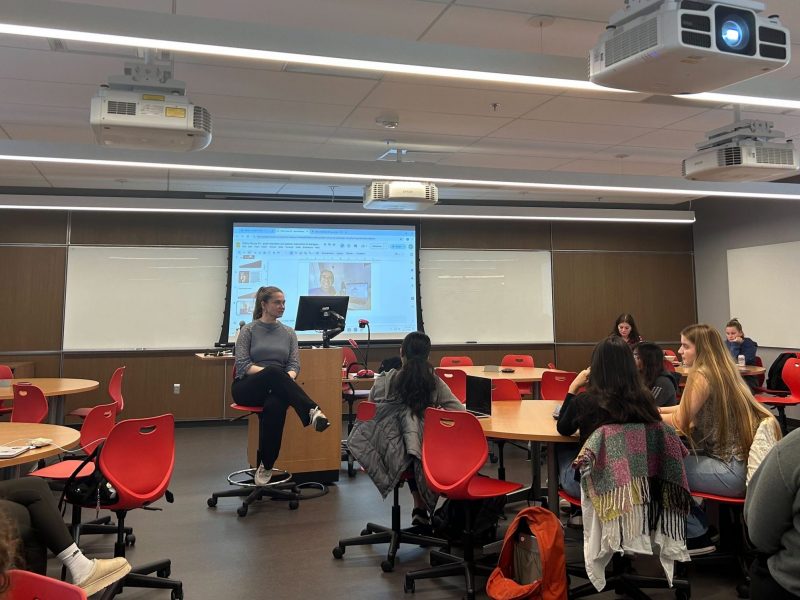
Justin Lee (left), director of exernal affairs, chats with Arash Bahari, a senior visiting from the University of Maryland, Baltimore County, at a Terps For Bernie welcome meeting on September 18, 2015.
This summer, Vermont Sen. Bernie Sanders surprised the nation with growing popularity — selling out stadiums, rising in polls and challenging Hillary Clinton in what was once seen as an inevitable win for the former secretary of state.
Now, that popularity is spreading to the University of Maryland’s campus. Friday, a Terps for Bernie interest meeting drew more than 100 attendees, said co-founder Chris Walkup. In the future, the student group hopes to host debate-watching parties, organize a trip to the Nov. 7 “Enough is Enough” rally, debate other political student groups and volunteer at phone banks.
“Campus is definitely feeling the Bern,” the government and politics and theatre major said.
Sanders’ popularity surge could be attributed to a number of factors: voters searching for a more liberal alternative to front-runner Clinton, growing disillusionment with establishment candidates or a changing political landscape.
READ MORE: UMD College Democrats plans candidate speaker circuit
Or, Walkup said, it could have something to do with the Vermont senator’s track record.
“It comes down to authenticity and consistency,” Walkup said. “We’re growing up in this age where we can fact-check everything, and it’s made us cynical. Bernie, though, is consistent on message, talks about the real issues, not just soap-opera stuff — and he’s been saying it since the beginning without changing.”
The president of UMD College Democrats, Jake Polce, agreed Sanders has a legacy of working toward progressive ideals — likely a part of his appeal to college students.
“He seems really in tune with the younger people, especially with his stances on LGBT rights and racial equality,” the sophomore government and politics major said. “He’s been so consistent in his career as a politician, you can tell he’s working toward an authentic ideology. He’s a politician of conviction and values.”
Nationally, Clinton holds a nearly 20-point lead over the Vermont senator, according to a CNN/ORC poll released Monday. In the event Vice President Joe Biden enters the race, 42 percent of Democratic primary voters said they would support Clinton, 24 percent favored Sanders, 22 percent preferred Biden and former Maryland Gov. Martin O’Malley pulled 1 percent of potential voters.
READ MORE: Despite youthful appeal, Martin O’Malley struggles in 2016 race
Clinton’s lead over Sanders grew since an early September CNN/ORC poll, which showed Clinton with 37 percent support and Sanders at 27 percent. Biden held 20 percent in the same poll.
Historically, only a few candidates so far to the left of center within the Democratic party have polled as high as Sanders, said government and politics professor Irwin Morris.
Despite Sanders’ early successes, though, Morris questioned his future in the race.
“It’s not impossible for him to win, but there are questions his campaign will have to address,” Morris said. “How much money will people want to put on a long shot? If it’s hard for him to even win the nomination because he’s so left of center, where does he get additional votes in the general election to the extent he would need them?”
In this age of extremely powerful political parties, said government and politics professor Stella Rouse, there are serious difficulties for a non-establishment candidate. Ultimately, she predicts, Sanders will drop out of the race, leaving Clinton as the Democratic nominee.
“Still, Sanders’ success could mean [Clinton] has to incorporate some of his proposals and ideas into her campaign,” Rouse said. “And if he’s able to do that, then he will have been successful.”



